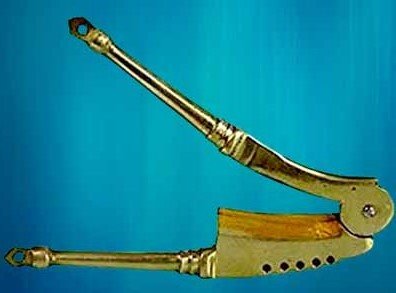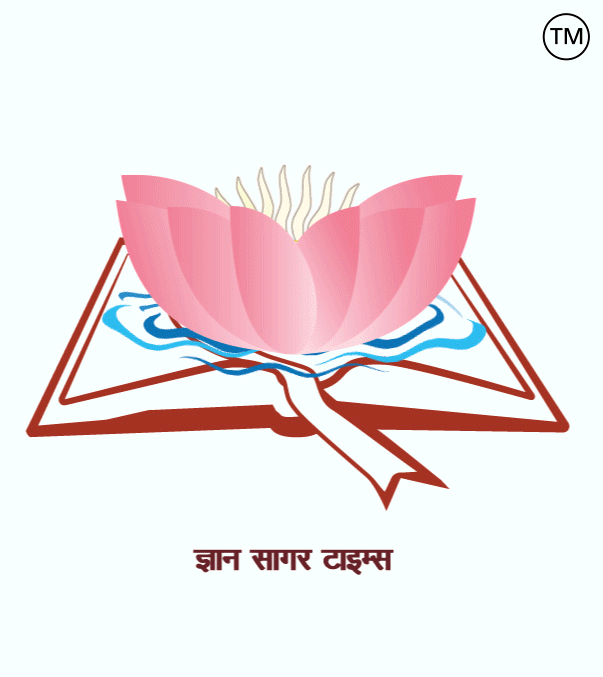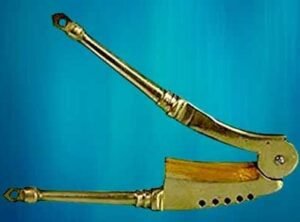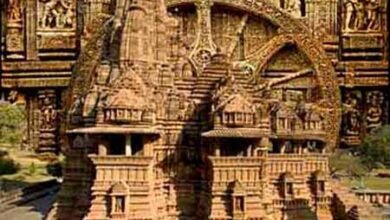
Related to Physics-177.
|
1. The acceleration produced in a body due to the force of gravity on a body? = Gravitational acceleration (g). 2. How is the relative density measured? = Hydrometer. 3. The property of the fluid which has a tendency to get the least area and always keeps the surface free from stress? = Surface tension. 4. When the velocity of a body is doubled, its momentum also becomes? = Double. 5. The distance travelled in a certain direction in unit time is called? = Velocity. 6. What is the unit of velocity? = meter per second (m/s). 7. What is the ability of an object to perform its work, because of its speed, it is called that object.? = Kinetic energy. 8. Where is the maximum weight of a body? = Vacuum and pole. 9. To a person suffering from far-sightedness? = Nearby items are not visible. 10. What is the fixed point around which the lever rod can freely rotate? = Fulcrum. 11. What is the force applied on the rod to use the lever? = Load or effort. 12. What is the value of gravitational acceleration? = 9.8 m / s2 . 13. How is load measured? = From spring balance or different types of weighing scales. 14. Whose principle do hydraulic brakes work? = Pascal. 15. If an object sinks partially or completely in a cool and stable liquid, there is a virtual decrease in its load, which is equal to the weight of the liquid displaced by the object. Whose statement is this? = Archimedes principle. 16. Because of which small pieces of camphor dance on the surface of water? = Surface tension. 17. The drawing of a man standing on a platform towards a train is based on whose theorem? = Bernoulli’s theorem. 18. The ability to act due to the position or shape of an object is called? = Potential energy. 19. Sound is an example of which wave? = Longitudinal wave. 20. Which wave is compressed and sparse? = Longitudinal wave. 21. Electromagnetic waves move in a vacuum? = 3.0 x108 meter per second. 22. Where is the MAC number used? = In determining the speed of the aircraft. 23. Which waves are used in sonography? = High-frequency sound waves and their echoes or Ultrasonic waves. 24. Which is used to determine the presence and location of substances by radio waves? = Radar. 25. Who discovered the Celsius scale? = Anders Celsius. 26. Who discovered the Fahrenheit scale? = Gabriel Daniel Fahrenheit. 27. What is the ratio between the linear expansion superficial expansions, and the volume expansion coefficient of the metal? = 1: 2: 3. 28. The specific heat of a substance is the amount of heat that produces a solitary heat increase in the unit mass of that substance, it is called? = Specific heat capacity. 29. SI unit of specific heat capacity? = Joule/kg. / Kelvin. 30. What is the SI unit of wavelength? = Meter. Prof. Amarendra Kumar. ========== ========= =========== भौतकी से संबंधित-177.
1. किसी पिंड पर आरोपित गुरूत्व बल के कारण पिंड में जो त्वरण उत्पन्न होता है, उसे? = गुरूत्वीय त्वरण (g). 2. आपेक्षिक घनत्व को कैसे मापा जाता है? = हाइड्रोमीटर. 3. द्रव का वह गुण जिसके कारण कम से कम क्षेत्रफल प्राप्त करने की प्रवृत्ति होती है तथा स्वतंत्र पृष्ठ सदैव तनाव की स्थिति में रहता है उसे? = पृष्ठ तनाव. 4. किसी पिंड के वेग को दुगना करने पर उसका संवेग भी हो जाता है? = दुगना. 5. इकाई समय में निश्चित दिशा में तय की गई दूरी को कहते हैं? = वेग. 6. वेग का मात्रक होता है? = मी/से. 7. किसी वस्तु में उसके गति के कारण जो कार्य करने की क्षमता आ जाती है उसे उस वस्तु की क्या कहते हैं? = गतिज ऊर्जा. 8. किसी पिंड का अधिकतम भार कहाँ होता है? = निर्वात एवं ध्रुव पर. 9. दूर दृष्टिदोष से पीड़ित व्यक्ति को? = निकट की वस्तुएँ दिखाई नहीं देती हैं. 10. जिस निश्चित बिंदु के चारो ओर उत्तोलक की छड़ स्वतंत्रतापूर्वक घूम सकती है, उसे क्या कहा जाता है? = आलम्ब. 11. उत्तोलक को उपयोग में लाने के लिए उसकी छड़ पर जो बल लगाया जाता है, उसे क्या कहा जाता है? = आयास. 12. गुरूत्वीय त्वरण का मान होता है? = 9.8 मी / से2. 13. भार को कैसे मापा जाता है? = कमानीदार तुला से, या अन्य तौलने वाले तराजू से. 14. हाइड्रोलिक ब्रेक किसके सिद्धांत पर कार्य करते हैं? = पास्कल. 15. कोई वस्तु किसी शांत और स्थिर तरल में अंशत: या पूर्णत: डूबती है, तो इसके भार में आभासी कमी आती है, जो कमी वस्तु के द्वारा विस्थापित तरल के भार के बराबर होती है. यह कथन किसका है? = आर्किमीडिज सिद्धांत. 16. किसके कारण कपूर के छोटे-छोटे टुकड़े जल की सतह पर नाचते हैं? = पृष्ठ-तनाव. 17. प्लेटफार्म पर खड़े आदमी का गाड़ी की ओर खींचा जाना किसके प्रमेय पर आधारित है? = बरनौली के प्रमेय. 18. किसी वस्तु की स्थिति या आकार के कारण जो कार्य करने की क्षमता आ जाती है, उसे कहते हैं? = स्थितिज ऊर्जा. 19. ध्वनि किस तरंग का उदाहरण है? = अनुदैर्ध्य तरंग. 20. किस तरंग में संपीडन एवं विरल बनता है? = अनुदैर्ध्य तरंग. 21. विद्युत चुम्बकीय तरंगों की चाल, निर्वात में होता है? = 3.0 x 108 मी प्रति सेकंड. 22. मैक संख्या का उपयोग कहाँ किया जाता है? = विमान की चाल निर्धारण करने में. 23. सोनोग्राफी में किन तरंगों का उपयोग किया जाता है? = पराश्रव्य तरंगों. 24. किसका प्रयोग रेडियो तरंग से पदार्थों की उपस्थिति और स्थान निर्धारण मे किया जाता है? = रडार. 25. सेल्सियस पैमाना की खोज किसने की थी? = एंडर्स सेल्सियस. 26. फारेनहाइट पैमाना की खोज किसने की थी? = गेब्रियल डैनियल फारेनहाइट. 27. धातु के रेखीय प्रसार, क्षेत्रीय प्रसार एवं आयतन प्रसार गुणांक में कितना अनुपात होता है? = 1 : 2 : 3 . 28. किसी पदार्थ की विशिष्ट उष्मा, उष्मा की वह मात्रा है, जो उस पदार्थ के एकांक द्रव्यमान में एकांक ताप वृद्धि उत्पन्न करती है उसे कहते हैं? = विशिष्ट उष्मा की क्षमता. 29. विशिष्ट उष्मा का एस.आई. मात्रक होता है? = जूल/किग्रा./केल्विन. 30. तरंगदैर्घ्य का SI मात्रक क्या है? = मीटर. डॉ. (प्रो.) अमरेंद्र कुमार.
|






